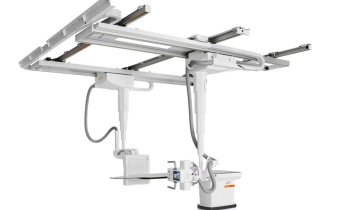Long procedures require long fluoroscopy times with a serious amount of radiation for physician and personnel. The idea is that both the performance of procedures can be improved by robotic navigation systems and that the amount of complications can be reduced. At present two systems are extensively tested in cardiology: a robotic system that allows manipulating conventional catheters directly in the heart (Sensei, Hansen) and the Niobe (Stereotaxis) system that allows steering special magnetic catheters with the help of two large external magnets.
The experience with the robotic remote navigation system is limited but the published data suggests that transeptal puncture can be guided with the steerable sheath system and that pulmonary vein antra can be isolated and flutter can be done. It seems that radiation exposure is less than with conventional approaches. However, with the steerable sheath system, forces at the catheter tip are not necessarily reduced and this probably explains that two out of forty patients had pericardial tamponade in a recent series. Experience with the magnetic navigation system is larger and has fulfilled expectations. Magnetic catheters are floppy and therefore the forces at the tip are reduced, still yielding the same lesions when lesions are compared to conventional catheters (as we have shown in animal experiments).
Further, magnetic navigation allows going back to less invasive approaches for catheter ablation as the retrograde transaortic approach for WPW and even for left sided atrial arrhythmias. Whether the actual system can also be used for pulmonary vein isolation depends on the development of innovative solutions for the catheters, as we are still awaiting a cool tip which can be steered with a magnet. Anyhow, sophisticated mapping can be performed in a full automatic mode.
by Prof Luc Jordaen










